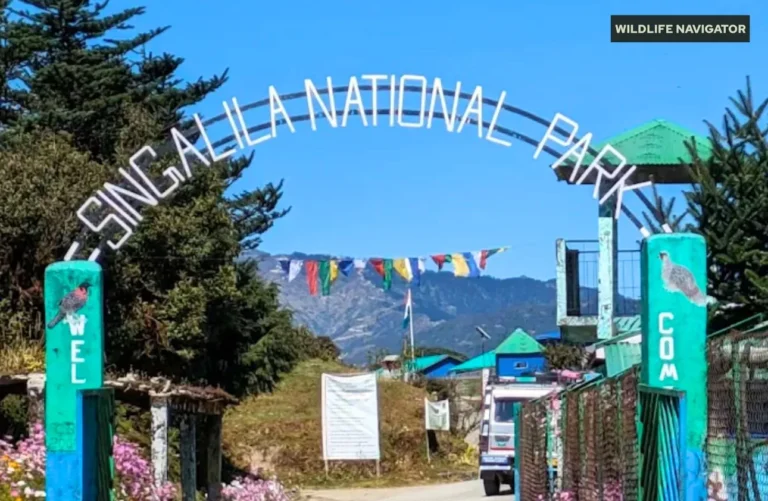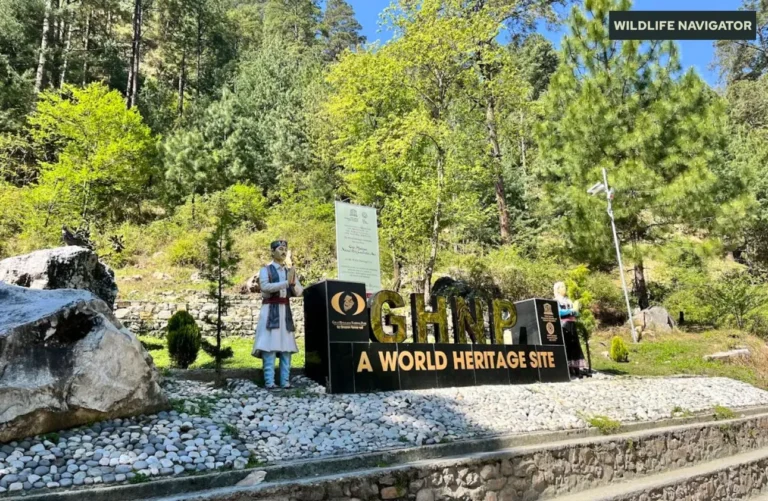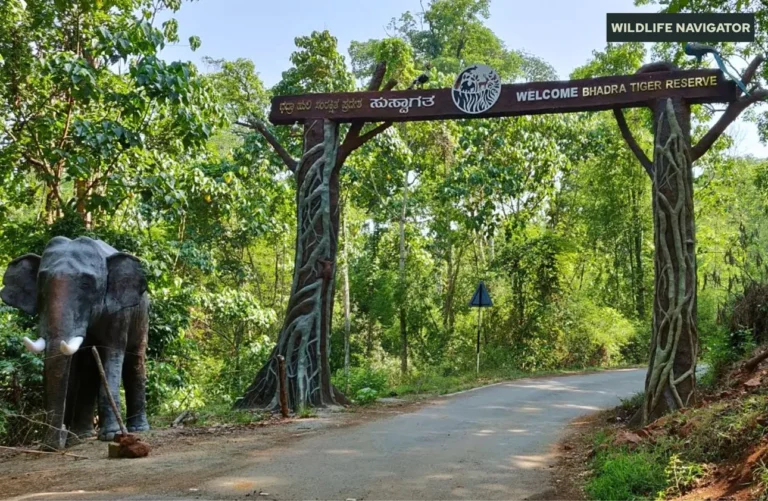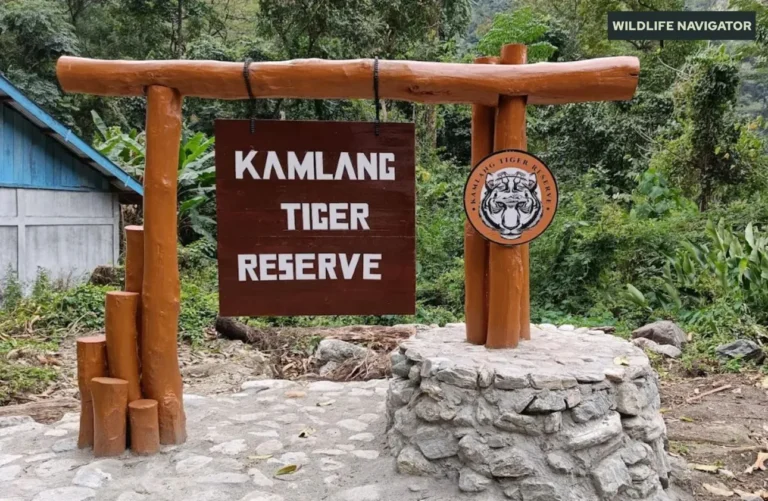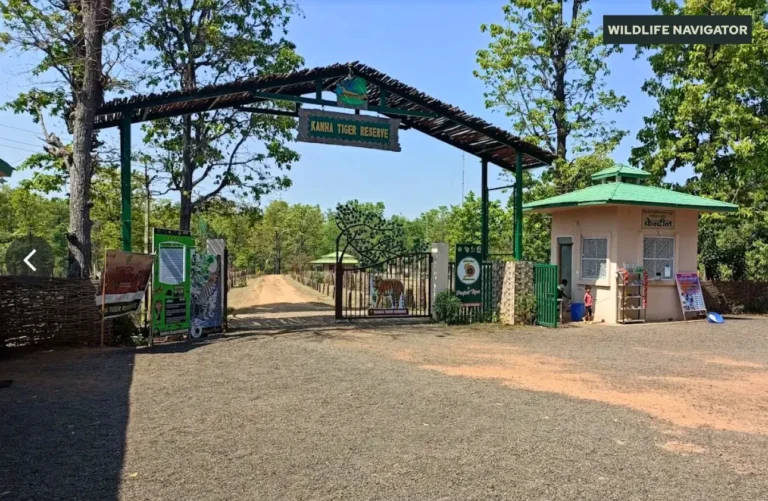Panna National Park & Tiger Reserve, Madhya Pradesh
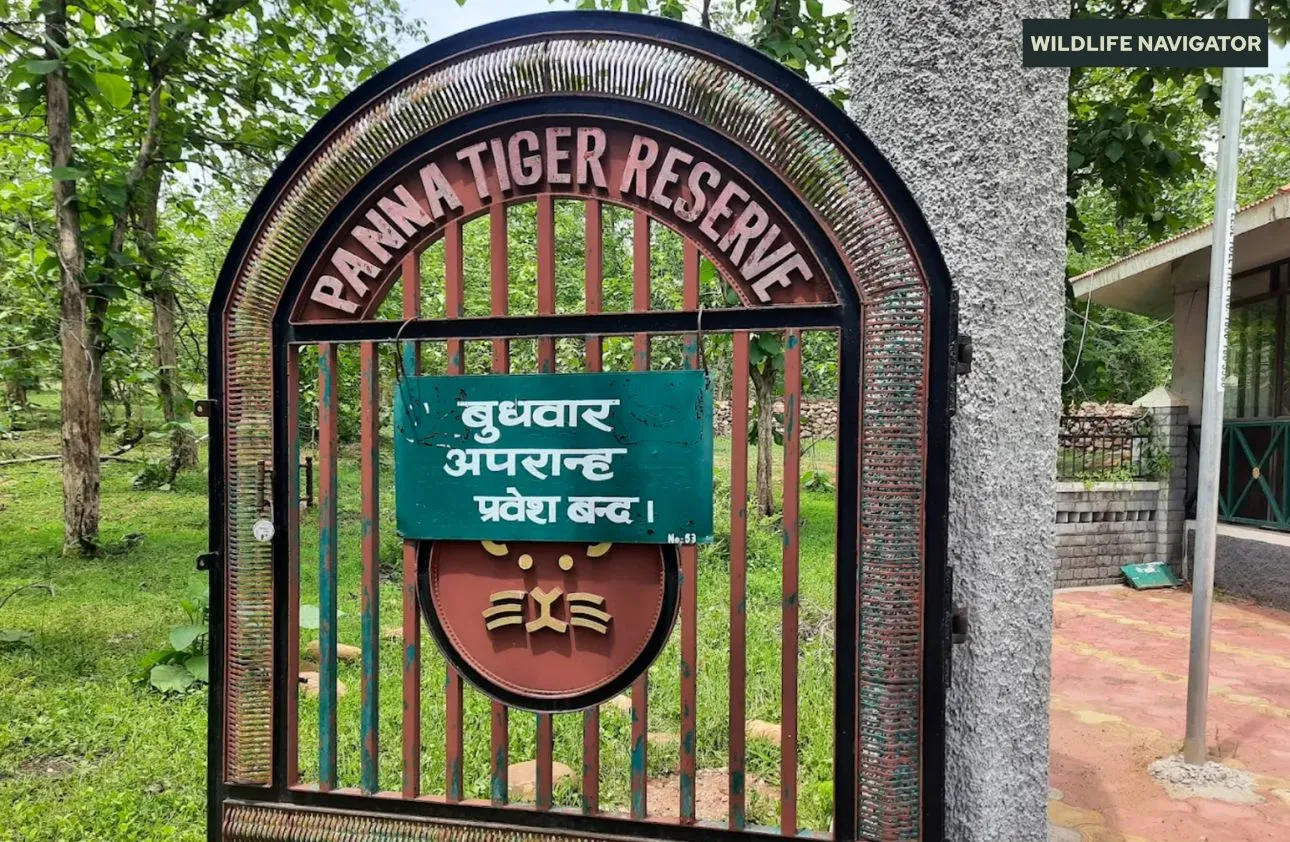
Nestled in the heart of Madhya Pradesh, Panna National Park is a hidden gem among national parks in India, offering a perfect blend of rich biodiversity, scenic landscapes, and adventure for wildlife enthusiasts. Spread across the Panna district, this park is part of the Panna Biosphere Reserve, which is recognised for its ecological significance. It is especially famous as a tiger reserve under Project Tiger, making it one of the crucial areas contributing to the conservation of India’s majestic big cats.
Apart from tigers, the park is renowned for its population of Barasingha (swamp deer), a species once on the verge of extinction, and the rare gharial crocodile found in the Ken River flowing through the park. The landscape is a striking mix of dry deciduous forests, rolling grasslands, riverine habitats, and deep canyons that are both beautiful and ecologically rich. Panna also has a historical charm, with diamond mines and ancient forts adding a cultural dimension to the wildlife experience.
Visitors are drawn here not just for wildlife sightings, but also for the sense of tranquillity that comes from being surrounded by nature’s untouched beauty. The park’s combination of flora, fauna, and natural landscapes makes it a must-visit destination for nature lovers, photographers, and adventure seekers exploring tiger reserves in India.
1. History, Geography & Landscape
1.1 History and Establishment
Panna National Park was officially declared a National Park in 1981 to protect its unique wildlife and ecosystems. Later, in 1994, it was recognised as a Tiger Reserve under Project Tiger, highlighting its importance in tiger conservation in India. Historically, the region is also known for its diamond mines, some of which date back centuries. These historical sites, along with ancient forts and local tribal settlements, add cultural significance to the park, making it not just a wildlife destination but also a place of heritage.
1.2 Terrain and Ecosystem
The park spans over 542 square kilometres, forming part of the Panna Biosphere Reserve. Its terrain is diverse, consisting of dry deciduous forests, open grasslands, rocky hills, river valleys, and waterfalls. The Ken River, which meanders through the park, forms the lifeline for many species and contributes to the park’s riverine ecosystems. Visitors can witness deep gorges, scenic waterfalls like Pandav Falls and Raneh Falls, and unique geological formations of diamond-bearing rocks. This varied landscape supports a wide range of flora and fauna, creating a balanced ecosystem.
1.3 Climate and Seasonal Variations
Panna National Park experiences three main seasons, each offering a distinct experience:
- Summer (March–June): Hot and dry; animals gather near water sources, making wildlife spotting easier.
- Monsoon (July–September): Heavy rains transform the park into lush greenery; however, some safari routes may remain closed due to waterlogged paths.
- Winter (October–February): Mild and pleasant temperatures; the best season for safaris and photography, as wildlife is more active during the cooler months.
2. Panna Tiger Reserve
2.1 Status under Project Tiger
Panna National Park was designated as a Tiger Reserve in 1994, becoming part of India’s flagship Project Tiger program aimed at protecting tigers and their habitats. The park had faced a severe decline in tiger population during the early 2000s, reaching near extinction. However, through dedicated conservation measures, including anti-poaching initiatives and tiger translocation programs from other reserves, Panna has witnessed a remarkable recovery of its tiger population.
2.2 Tiger Population and Conservation Efforts
The park’s tiger population has steadily grown due to strict protection and scientific monitoring. Tigers in Panna are often spotted along the Ken River corridor and near waterholes during early mornings and late afternoons. Conservation efforts include:
- Regular patrolling by forest staff to prevent poaching.
- Habitat restoration, ensuring prey availability and water resources.
- Community awareness programs, encourage local residents to participate in wildlife protection.
2.3 Other Notable Carnivores
Apart from tigers, Panna is home to several other carnivores, which contribute to the park’s ecological balance:
- Leopards: Often elusive, found in rocky terrains.
- Jungle cats and hyenas: Common in grasslands and scrub areas.
- Striped hyenas: Typically nocturnal, helping control carrion.
2.4 Major Tiger Sightings Areas
- Ken River Corridor: Tigers are frequently spotted near riverbanks.
- Raneh Falls Zone: Waterholes attract both prey and predators.
- Van Vihar & Tourist Zones: Accessible areas where tigers may occasionally be seen.
2.5 Tiger Photography Tips
- Opt for early morning or late afternoon safaris, when tigers are most active.
- Focus on areas near waterholes for better chances of sightings.
- Use telephoto lenses to capture close-up shots without disturbing wildlife.
- Maintain patience and silence to avoid scaring animals away.
3. Flora of Panna National Park
The forests of Panna National Park are a green haven, representing the rich biodiversity of central India. Its vegetation forms the backbone of the park’s ecosystem, providing food, shelter, and breeding grounds for a variety of wildlife, from large herbivores to tiny insects and birds.
3.1 Forest Types
Panna’s vegetation is primarily dry deciduous forest, with patches of riverine forest along the Ken River. The park’s diverse terrain—rocky hills, grasslands, and valleys—supports multiple vegetation types:
- Dry deciduous forests: Dominant throughout the park, these forests shed leaves in the dry season and regrow during monsoon, providing seasonal habitats for wildlife.
- Riverine forests: Found along the Ken River and its tributaries, these areas support tall grasses, reeds, and aquatic plants, creating ideal environments for gharials, crocodiles, and waterfowl.
- Grasslands and scrublands: Interspersed among hills and plains, these areas attract herbivores like Barasingha, sambar, and nilgai.
3.2 Notable Tree Species
The park hosts several important tree species that sustain the ecosystem:
- Teak (Tectona grandis) – a major canopy tree providing shade and shelter.
- Sal (Shorea robusta) – common in dense forest patches.
- Bamboo groves – provide cover for herbivores and nesting sites for birds.
- Terminalia species – such as Terminalia arjuna, important for soil and riverbank stabilisation.
3.3 Medicinal and Endemic Plants
Panna’s forests also contain a variety of medicinal plants used in traditional remedies, including Aegle marmelos (Bael), Gloriosa superba, and Rauvolfia serpentina. The region also harbours several endemic species adapted to its dry and rocky conditions.
3.4 Seasonal Transformation
During the monsoon, the forests turn lush green, and streams flow abundantly, while the winter months bring cooler temperatures and a serene atmosphere, making wildlife easier to spot near water sources.
4. Fauna of Panna National Park
The wildlife of Panna National Park is as diverse and captivating as its landscapes. The park is home to numerous mammals, birds, reptiles, and amphibians, making it a hotspot for biodiversity in central India.
4.1 Mammals
Panna shelters a variety of mammals, from apex predators to smaller herbivores:
- Tiger (Panthera tigris) – the park’s flagship species and main attraction.
- Leopard (Panthera pardus) – elusive but widely distributed in rocky and forested areas.
- Sloth Bear (Melursus ursinus) – commonly spotted foraging for termites and honey.
- Barasingha (Swamp Deer) – a rare species thriving in the park’s grasslands.
- Sambar, Chital, Nilgai, Wild Boar – form the main prey base for predators.
- Smaller mammals – Indian pangolin, porcupine, civets, and mongoose species.
4.2 Birds
With over 250 recorded bird species, Panna is a paradise for birdwatchers:
- Kingfishers, Paradise Flycatchers, and Drongos – commonly seen along rivers and forests.
- Crested Serpent Eagle, Black Kite, Brahminy Kite – dominate the skies.
- Migratory species arrive seasonally, adding variety and vibrancy to the park’s avifauna.
4.3 Reptiles and Amphibians
Panna’s reptiles thrive along riverbanks and forest floors:
- Gharial and Mugger Crocodile – inhabit the Ken River.
- Indian Rock Python, Russell’s Viper, Common Krait – found throughout forested areas.
- Monitor Lizard and Agamas – common near water and rocky outcrops.
- Frogs and Toads – including region-specific species in riverine habitats.
4.4 Insects and Butterflies
The park’s rich undergrowth supports a diverse insect population, including colourful butterflies such as:
- Common Jezebel, Blue Mormon, Crimson Rose – adding beauty to forest trails.
- Dragonflies and damselflies – abundant near water bodies during monsoon.
The diversity of flora and fauna in Panna National Park makes it not only a critical wildlife sanctuary but also a living museum of India’s natural heritage, offering visitors a chance to experience the richness of central India’s wild heart.
5. Safari Experience, Entry Fees & Park Zones
5.1 Types of Safari
Panna National Park offers a variety of safari experiences, allowing visitors to explore the wilderness up close:
- Jeep Safari: The most popular option, ideal for spotting tigers, leopards, and herbivores in forested and grassland areas.
- Canter Safari: Open-top buses that can accommodate larger groups, offering a more social wildlife experience.
- Trekking Safari: Guided walks along designated trails, best for birdwatching, spotting reptiles, and photographing flora.
- Boat Safari: Available along the Ken River, providing a chance to see gharials, crocodiles, and aquatic birds.
5.2 Safari Timings
- Morning Safari: 6:00 AM – 10:00 AM (best for tiger and predator sightings).
- Afternoon Safari: 3:00 PM – 6:00 PM (ideal for birdwatching and evening activity of mammals).
- Timings may vary slightly depending on season; booking in advance is recommended.
5.3 Safari Zones and Highlights
The park is divided into zones to manage wildlife protection and visitor experience:
- Zone A: Dense forest and riverine areas; known for tiger and leopard sightings.
- Zone B: Grasslands and open plains; excellent for spotting Barasingha, sambar, and nilgai.
- Zone C: Scenic viewpoints, waterfalls like Pandav and Raneh Falls, and birdwatching spots.
5.4 Entry Fees
Entry fees are structured to accommodate domestic and international tourists:
- Indians: ₹500–₹700 per safari (depending on zone and vehicle).
- Foreigners: ₹1500–₹2000 per safari.
- Children (up to 12 years): 50% discount.
- Camera/Video Charges: ₹200–₹500, depending on type.
- Note: Fees are subject to change; official forest department website has latest details.
5.5 Safari Booking Process
- Online Booking: Available through the Madhya Pradesh Forest Department official portal.
- On-site Booking: Possible at forest check posts or entry gates.
- Through Tour Operators: Many local agencies provide packages including accommodation, safari, and guided tours.
- Guidelines: Only authorised vehicles and guides are allowed inside; stick to marked routes for safety and wildlife protection.
6. Best Time to Visit Panna National Park
Panna National Park can be visited throughout the year, but different seasons offer unique experiences for wildlife enthusiasts and nature lovers.
6.1 Summer (March–June)
Summers in Panna are hot and dry, with temperatures often reaching 40°C. During this time, animals congregate near waterholes, making it the best season for spotting tigers, leopards, and herbivores. Early morning and late afternoon safaris are ideal to avoid the midday heat.
6.2 Monsoon (July–September)
The monsoon transforms the park into a lush green paradise. Waterfalls swell, rivers flow abundantly, and vegetation flourishes. Wildlife is abundant, but some safari routes may be closed due to rain and slippery paths. This season is perfect for birdwatching and photographing the park’s vibrant landscapes.
6.3 Winter (October–February)
Winter is the most pleasant season to explore Panna, with mild temperatures and clear skies. Wildlife is active throughout the day, and the riverine areas attract birds and mammals alike. This season is highly recommended for safaris, trekking, and nature photography.
Overall, October to March is considered the ideal period to visit for the best wildlife sightings and comfortable weather.
7. How to Reach & Getting Around
Reaching Panna National Park is relatively easy, with multiple transport options available for travellers coming from different parts of India.
7.1 Nearest Airport
The closest airport to Panna National Park is Khajuraho Airport, approximately 35 km from the park. It has regular flights connecting to major cities like Delhi, Mumbai, and Bhopal. From the airport, visitors can hire taxis or pre-arranged transfers to reach the park easily.
7.2 Nearest Railway Station
The Panna railway station is the nearest railhead, but it has limited connectivity. Alternatively, Khajuraho railway station is well-connected to cities such as Delhi, Bhopal, and Satna, making it a convenient option for travellers. Local taxis and buses are available from the stations to the park.
7.3 By Road
Panna is well-connected by state highways and national highways, including NH39. Private taxis, buses, and car rentals are easily available from nearby cities such as Khajuraho (35 km), Satna (60 km), and Chhatarpur.
7.4 Getting Around Inside the Park
Once inside the park, only authorised vehicles and guides are allowed. Visitors can choose from:
- Jeep and Canter Safaris for wildlife spotting
- Guided trekking trails for nature walks and birdwatching
- Boat safaris along the Ken River for gharial and aquatic bird sightings
Hiring a local naturalist or guide is recommended to enhance wildlife experiences and ensure safety while exploring the park’s diverse terrain.
8. Accommodation, Dining & Stay Options
Panna National Park offers a variety of accommodation options, catering to nature enthusiasts, budget travellers, and luxury seekers. Staying near or inside the park allows visitors to enjoy early morning and late afternoon safaris conveniently while being surrounded by nature.
8.1 Government Forest Lodges
The Madhya Pradesh Forest Department operates several lodges inside and near the park:
- Ken River Lodge: Located close to the river, offers scenic views and guided safaris.
- Panna Forest Rest House: Comfortable rooms with basic amenities for a budget-friendly stay.
- Raneh Falls Rest House: Ideal for those who want proximity to waterfalls and wildlife zones.
8.2 Eco-Camps and Budget Hotels
For travellers seeking a more immersive nature experience:
- Riverside camps along the Ken River offer tented accommodations with bonfires and guided night safaris.
- Local budget hotels in Panna town provide clean, affordable rooms and easy access to park entry points.
8.3 Luxury Resorts
Luxury options are available in and around Panna and nearby Khajuraho:
- Resorts with modern amenities, private safaris, and cultural experiences.
- Some offer curated packages including accommodation, meals, and safari tours.
8.4 Dining Options
- In-Park Canteens: Basic meals, snacks, and refreshments are available at forest lodges and rest houses.
- Nearby Restaurants: Panna town offers local cuisine, including vegetarian thalis, Indian snacks, and freshly prepared meals.
- Resort Dining: Luxury resorts provide multi-cuisine restaurants and traditional Madhya Pradesh dishes.
8.5 Tips for Stay
- Advance booking is recommended, especially during peak season (October–March).
- Choose accommodations near safari zones if wildlife spotting is a priority.
- Carry essentials like mosquito repellents, hats, and light clothing for comfort.
With these options, visitors can experience the park at their own pace while enjoying nature, wildlife, and comfort according to their preferences.
9. Travel Tips, Facilities & Visitor Guidelines
Visiting Panna National Park requires a bit of preparation to ensure a safe and enjoyable experience.
9.1 Essentials to Pack
Light cotton clothing, hats, binoculars, sunscreen, insect repellent, and comfortable walking shoes are recommended.
9.2 Facilities
The park provides basic amenities including medical aid, restrooms, drinking water points, and souvenir shops at key locations. Forest lodges and camps also offer meals and guidance for safaris.
9.3 Safety and Guidelines
- Follow instructions from safari guides and maintain a safe distance from animals.
- Avoid loud noises and littering inside the park.
- Photography should be done without disturbing wildlife; no flash near animals.
- Stick to designated trails and vehicles to protect both visitors and wildlife.
Being mindful of these tips ensures a safe, enjoyable, and eco-friendly visit while respecting Panna’s delicate ecosystem.
10. Nearby Attractions, Culture & Suggested Itineraries
Panna National Park is not just about wildlife; the surrounding region offers a rich tapestry of natural beauty, cultural heritage, and adventure activities. Combining a wildlife safari with nearby attractions makes for a memorable trip.
10.1 Nearby Wildlife and Natural Attractions
- Raneh Falls: A stunning canyon with cascading waterfalls and unique rock formations, ideal for photography and short treks.
- Ken Gharial Sanctuary: Located along the Ken River, it protects rare gharial crocodiles and provides excellent birdwatching opportunities.
- Pandav Falls: A scenic waterfall named after the Pandava brothers from the Mahabharata, surrounded by lush greenery.
- Diamond Mines of Panna: Historically significant sites that showcase the region’s gem-rich heritage.
10.2 Cultural Sites
- Khajuraho Temples: UNESCO World Heritage site with intricately carved temples depicting ancient Indian art and architecture, about 35 km from Panna.
- Local Tribal Villages: Offers insight into tribal traditions, handicrafts, and eco-tourism initiatives.
10.3 Adventure and Eco-Tourism Activities
- Birdwatching and Photography: Abundant opportunities in riverine zones and grasslands.
- Trekking and Nature Walks: Trails along the Ken River and forested areas provide moderate adventure.
- River Boating: Guided boat rides allow close encounters with aquatic life like gharials and migratory birds.
10.4 Suggested Itineraries
2-Day Itinerary:
- Day 1: Morning safari, visit Pandav Falls, evening relaxation at forest lodge.
- Day 2: Morning boat safari, explore Raneh Falls, and return via local villages.
3-Day Itinerary:
- Day 1: Arrive at Panna, afternoon safari, and sunset photography.
- Day 2: Full-day safari covering multiple zones, evening at Ken River.
- Day 3: Visit Raneh Falls and Ken Gharial Sanctuary, optional trip to Khajuraho temples before departure.
These itineraries blend wildlife adventure, scenic landscapes, and cultural experiences, making Panna National Park and its surroundings a comprehensive destination for nature and culture enthusiasts alike.
FAQs about Panna National Park
Which is the best time to visit Panna National Park?
The ideal period is October to March when the weather is pleasant and wildlife sightings are more frequent.
How can I book safari tickets?
Safari tickets can be booked online via the Madhya Pradesh Forest Department website, on-site at forest check posts, or through local tour operators offering package deals.
Which animals are commonly seen?
Visitors can expect to see tigers, leopards, Barasingha, sambar, nilgai, sloth bears, and a variety of birds like kingfishers, paradise flycatchers, and migratory species.
Is it safe for families with kids?
Yes, Panna is family-friendly. Guided safaris and restricted zones ensure a safe experience for children while exploring wildlife responsibly.
What is the nearest airport or railway station?
- Airport: Khajuraho Airport (~35 km)
- Railway Station: Panna Railway Station (limited connectivity) or Khajuraho Railway Station (better connectivity)
Are local guides available inside the park?
Yes, trained forest guides and naturalists are available at entry points to assist visitors, enhance wildlife experiences, and ensure safety.
Are photography and videography allowed?
Yes, with an additional camera charge. Visitors must follow park rules: no flash near animals, maintain silence, and stay in authorised vehicles or areas.
